Scoutmaster Musings
Archives:
2023 2022 2021 2020 2019 2018 2017 2016 2015 2014 2013 2012 2011 2010 2009 2008 2007 2006 2005
Cub Scout Knife Use
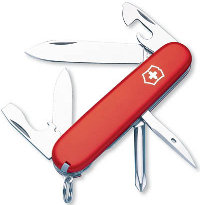
 A revision to the BSA Guide to Safe Scouting is out this month, with one very important clarification for Cub Scout dens. Cubmasters and den leaders make note of this!
A revision to the BSA Guide to Safe Scouting is out this month, with one very important clarification for Cub Scout dens. Cubmasters and den leaders make note of this!Tigers and Wolfs may not use knives during Scouting activities. Bear scouts and Webelos are allowed to use knives, but should be given proper and thorough training before receiving that privilege. The Whittling Chip is a good start for knife training.
So, if your Pack has been letting Tigers or Wolfs whittle away, it's time to stop. I'm sure many first and second grade boys you know can handle a knife just fine - I had my own when I was that age. But, while Scouting, follow the Scouting guidelines and keep everyone safe. Review Age-appropriate Activities on scouting.org for a chart of what's cool to do at each level of Scouting.
It's the unit leader's responsibility to know, understand, and follow the BSA safety guidelines. Give copies of the BSA Commitment to Safety to all your unit volunteers, get them trained, and enjoy Scouting.
Scout On
| See 11 comments | Leave Comment |
Posted: 6:29 03-12-2013 957
Fire Fails
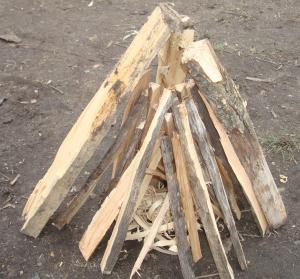
 How does a Boy Scout make a fire with two sticks:
How does a Boy Scout make a fire with two sticks:Make sure one is a match.
We are supposed to be good at many outdoor skills, one of which is fire starting. It is just a Scouting thing.
In reality, I have not met many scouts that can start a fire readily - in good weather, let alone rain or dampness. Even when training with Scouters, it is rare that one will volunteer to lay and light the fire, prefering to give someone else the opportunity to show off.
This is one of those very few things that I have learned in Scouting that totally confuses me. I LOVE fire - making fires, lighting fires, and burning stuff. I like tossing armfuls of leafs on a fire to make a huge cloud of smoke. I like making fire with bow drills, fire pistons, magnifying glass, flint-n-steel, and any other primitive way I hear about. I like flicking a Bic just as well. I enjoy keeping the smallest of flames alive, as well as a roaring bonfire. I get a kick out of bringing seemingly dead ash back to life. But, I'm afraid, I'm a minority - maybe that's a good thing.
When I became a scoutmaster, I was surprised by the lack of skill and interest in firecraft. Sure, the scouts like to poke fires with sticks and play around, but few were capable of, or interested in, getting a fire going.
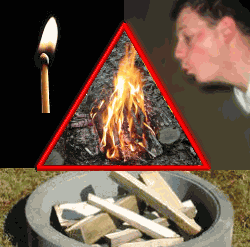
 Observing scouts for years, I've discovered these fire fails. Keep them in mind and maybe your scouts will be more successful in their flamboyant conflagrations:
Observing scouts for years, I've discovered these fire fails. Keep them in mind and maybe your scouts will be more successful in their flamboyant conflagrations:- Fire is a Mystery - When someone does not understand how a fire works, he can't make one. The Fire Triangle describes what is necessary for a fire.
- Fuel - wood, gas, wax, any flammable material is fuel, but we use wood.
- Air - a fire needs to breath. Without air reaching the fuel, the fire smothers.
- Heat - the fuel and air combust with heat. The initial heat to start the fire usually comes from friction but could be solar or pressure instead.
- Two Big Sticks - A fire needs to start small and grow. Start with tiny slivers of fuel and add gradually larger pieces.
Often, a scout will make a small pile of big sticks and go through a box of matches trying to make one catch. Air is missing - there is not enough fuel exposed to air. - The Plateau Lay - Yes, I know you've not heard of the plateau fire lay. That's because it doesn't work very well. But, sticks laid on the ground - even nice, dry, slivers of fuel - do not make a fire.
Many times, I've seen a scout light a twig and watch it burn out, wondering why it did not catch those twigs around it. Then, he'll light the next twig, and so on until he's out of matches. There's fuel and air, but no heat - all the heat went up into the sky rather than into the fuel laying around it. - Poof - The scout shaves some slivers, makes a nice pile, and lights it. Success! Then, he drops a large piece of wood on and smothers it.
- ReDo - Flames quickly leap from the prepared fuel and the scout admires his work. When the flames begin to ebb, he realizes he needs more wood. While he's off gathering more twigs, it goes out and he's back to square one.
Fire making certainly is a mixture of art and science. It's a skill that, once mastered, can serve a scout his entire life. In any situation, he may very well be the only one knowledgeable and comfortable with quickly, safely, and consistently creating fire for heat, cooking, or just entertainment.
Fortunately, a couple years ago, a scout joined the troop with a spark in his eye. He kindled that spark into many a fire - campfire in dry summer, fire for hobo dinners in wet spring, and early morning breakfast fire in 18 inches of snow in dead of winter. Matthew made fires himself. He gathered and prepped the wood, laid the fire, and brought it to life with no help. He renewed my faith that there is still hope for a fire-cooked meal, s'mores, and campfire stories.
For lots more fire starting info, visit Campfire Dude.
Scout On
| Leave Comment |
Posted: 13:36 03-07-2013 956
Creme or Crunch?

 Hey, there's a lot going on today, but this is much more important and I just had to share.
Hey, there's a lot going on today, but this is much more important and I just had to share.I love Physics.
I love Oreos.
I love Portland, Oregon.
I love inventors.
I love dry humor.
And, this video has it all!
I ALWAYS unscrew my oreos, but I like both the creme and the crunch. How about you? What's the proper way to eat an oreo?
This project could be an idea for lots of merit badges - Art, Electronics, Engineering, Inventing, Metalwork, Robotics, and Welding at least.
Today is your last chance to enter this month's give-away on Contest page.
And, don't forget to comment on the 1,000 Likes post for a chance to win a $25 Scout Shop card.
Scout On
| See 3 comments | Leave Comment |
Posted: 9:59 02-28-2013 955
Food Protection
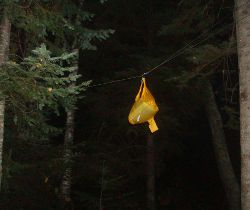
 It's not so bad when you're right by the cars on a weekend campout, but if your food is lost while deep in the backcountry on a high adventure, you can be in big trouble. With a couple days hiking between your crew and the nearest trailhead, running out of food probably won't kill you, but it's a big step in that direction.
It's not so bad when you're right by the cars on a weekend campout, but if your food is lost while deep in the backcountry on a high adventure, you can be in big trouble. With a couple days hiking between your crew and the nearest trailhead, running out of food probably won't kill you, but it's a big step in that direction.What? How can a group LOSE their food? - you might ask.
- Water - Rain and crackers don't mix well. Dropping a food bag into a lake or stream can ruin unprotected items. Fortunately, this is easy and light to prevent. Repackage everything into zip-loc bags. This reduces packaging weight and keeps everything safe from moisture. Putting multiple small bags into a larger 2.5 gallon zip-loc increases the protection. It also provides easy garbage storage.
- Dirt - When you drop your ritz cracker with honey on it, you know which side will hit the ground! You can blow dirt off many items, but not all. Being careful when opening packages, passing bowls, and stirring pots is the best protection against dropping and spilling food. No one's going to want those ramen noodles after you tip the cookpot over, are they?
There's not much concern about dirt getting into food while hiking, but spilling food at camp is a common problem. - Stupidity - The food is forgotten in the car, along the trail, or at the previous campsite. By just not paying attention and double-checking yourself, you can forget your food. Yes, I have seen it happen!
- Animals - Critters are opportunists. Anything that smells interesting gets investigated. And, they can find the smallest bits hidden far out of sight so sleeping with your food isn't a great idea. The most common stealers are mice, chipmunks, raccoons, other rodents and birds. Bears generally stay away from people, unless they've been habituated - learned to associate people with easy food. In those popular locations with problem bears, special regulations are in place for visitors which often includes use of bear-proof cannisters.
Whether it's bears or mini-bears (rodents) that are the concern, protecting food is handled in a similar manner. Storing it in a smell-resistant bag and hanging it out of reach keeps it safe.
If bears aren't a concern, as when I hiked the Arizona Trail, there are wire mesh food bags available that mini-bears can't chew through, like OutSak.
For those times when you need to hang, I've found the PCT Method (just google it) to be the best if there are large trees around. Along the Superior Hiking Trail in Minnesota, I could often only find small trees and came up with my own way of hanging so the food is high enough and away from the tree.
- Throw rope with carabiner on end over high branch.
- Clip food bag to carabiner. Lift carabiner and food bag as high up the rope as possible and loop rope through carabiner so it doesn't slide.Walk the other end of the rope away from the tree to move the bag out from the tree.
- Tie rope to another tree as high up as I can reach.
This puts the food bag well over 10 feet up since I can reach up 8 feet. Well, at least I didn't lose any food!
But, here's something new and interesting...
A couple guys at University of Wisconsin in Stout, WI have designed a new product for hanging food bags. It's supposed to be simple to use and secure from pesky food stealers.
They made this video demonstrating how to use it. Unforatunately, there aren't any close-ups of the device or explanation on how it works.
So, take a look and let us all know what you think - innovation or not?
Scout On
| See 1 comment | Leave Comment |
Posted: 14:54 02-26-2013 954
1,000 Likes

 Win $25 because Boy Scout Trail hit 1,000 likes on Facebook this week! That means for every person that likes Boy Scout Trail, about 41,000 people like Sponge Bob Square Pants. :-)
Win $25 because Boy Scout Trail hit 1,000 likes on Facebook this week! That means for every person that likes Boy Scout Trail, about 41,000 people like Sponge Bob Square Pants. :-)But, hey, it's a start.
To celebrate, I'm giving a $25 Scout Shop gift card to a random one of those Likers.
All you have to do is leave a comment on this post AND be in the list of people that like Boy Scout Trail on FB before the end of February. That's a week to give folks a chance to enter. One will be randomly chosen and I'll contact you at the email address you leave in your comment.
So, if you already LIKE Boy Scout Trail, just leave a comment below. If you're not sure, then Click Here to go to FB and LIKE away, and leave a comment below.
Scout On, and thanks for the LIKEs
| See 29 comments | Leave Comment |
Posted: 22:32 02-21-2013 952
Denner
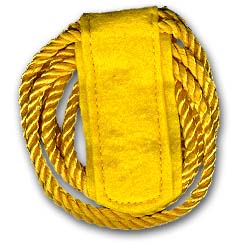

One of the things I like about Scouting is how the entire program from Tigers (or Lions now) to Eagles gradually provides age-appropriate opportunities for growth in the areas of character, citizenship, and fitness. One of the many tightropes a scout volunteer leader, such as den leader, cubmaster, and scoutmaster, needs to walk is balancing the appropriateness of activities and tasks.
For example, camping at the Cub Scout level happens in frontcountry settings and includes a parent or guardian for each scout while Boy Scouts have just a couple leaders and can explore into the wilderness as scout skills progress. Earlier experiences are small and manageable, and lay a foundation for more challenging later adventures.
Leadership is a core part of the scouting experience and all scouts should be offered opportunity to lead at all levels of scouting. The Denner role is a wonderful means by which individual scouts experience small doses of leadership, and the power, responsibility, and frustration that can come from it.
Every den should use the Denner position. The denner is a den member that has been selected to the position for a short time. This is usually a month or two so he can participate in this role multiple times. It's important that the den participate in the choosing of the denner, but selections can be handled different ways based on the age of scouts. Tiger and Wolf scouts may choose which scout will be the denner to fill a list of months. Bears may elect the next denner with a show of hands. Webelos could have a secret ballot election. If the den leader just assigns the job, it takes ownership away from the scouts.
To ensure all scouts get a time as denner, den leaders should stipulate that no scout can be selected twice until all scouts have been denner once.
The denner wears the gold double-cord denner braid looped over his left shoulder while in the position. Many dens pass this braid on to the next denner. Past denners sometimes keep the gold tab portion to wear on their blue Cub Scout uniform to signify they have been a denner.
The denner duties are defined by the den leader. They should be appropriate for the age of the den and should be supplemental to the duties of the den chief, if one is used. The den chief and denner may work closely together which makes both jobs more rewarding.
Some typical denner duties include:
- Plan to arrive 10 minutes early to den meetings and stay 10 minutes after to help set up and clean up.
- Wear the denner braid.
- Bring a den snack.
- Welcome scouts to the meeting.
- Call den meeting to order using the sign.
- Lead the den in a n opening ceremony.
- Lead a song.
- Help den leader with passing out supplies.
- Take attendance.
- Prepare a joke or story to tell.
- Prepare a game to play.
- Help with uniform inspections.
- Select teams or groups for activities and games.
- Help den leader keep order as asked.
Asking a Tiger scout to do all these things is probably too much. As scouts become accustomed to doing small bits of leading, more responsibility is given to them. By the time a scout has advanced to Webelos rank, he may take on even more leadership such as leading ceremonies and organizing a den hike.
By using the denner role, a den leader helps prepare scouts for Boy Scout positions of responsibility, such as Patrol Leader and Senior Patrol Leader. Both of these positions build on the rsponsibility of leadership they were introduced to in Cub Scouts.
Scout On
| See 2 comments | Leave Comment |
Posted: 10:48 02-19-2013 951
Animal Tracks

 What do fresh snow, mud, and dirt have in common?
What do fresh snow, mud, and dirt have in common?They're perfect for finding animal tracks on your next hike!
But, once you've found the tracks, you need to figure out what animal made them. That can be a challenge, especially for people just starting their outdoors adventures.
These Animal Track ID Cards are great for identifying 16 animals you might find on your travels, from the tiny mouse to the huge bear. It's a great resource to print and keep in your pocket for quick reference.
What should you do if a young one asks you, "Hey, what's that print?"
Hand him the sheet so he can figure it out himself instead of impressing him with your infinite wisdom and simply saying, "Oh, that's a wolf." Discovery is the best teacher!
Scout On
(If that link above doesn't work, see the backup.)
| See 3 comments | Leave Comment |
Posted: 13:36 02-13-2013 947
First Campout
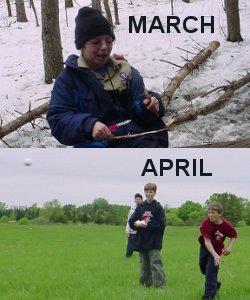
 After their Blue Gold banquets and cross-over ceremonies, many Webelos will be joining troops over the next month. A new adventure for young boys full of excitement and apprehension about camping without parents, cooking their own food, and hanging out with older guys. These Webelos have been top dog for the past year and they're now being thrown back to the bottom of the heap. Making this transition fun and accepting is a key first step for a long Boy Scout experience. Ensuring their first campout is successful and rewarding is a great way to start their time with your troop.
After their Blue Gold banquets and cross-over ceremonies, many Webelos will be joining troops over the next month. A new adventure for young boys full of excitement and apprehension about camping without parents, cooking their own food, and hanging out with older guys. These Webelos have been top dog for the past year and they're now being thrown back to the bottom of the heap. Making this transition fun and accepting is a key first step for a long Boy Scout experience. Ensuring their first campout is successful and rewarding is a great way to start their time with your troop.Joining in March gives new scouts a few camping opportunities with the troop before their big Summer Camp experience. Be sure your troop has planned campouts in April and May geared towards the new guys. As you can see in the photo, at least around here, a March campout can be just plain miserable with cold, wet weather and not a great first experience for new scouts - while an April campout is usually beautiful. I'd recommend having the new scouts spend March getting ready for camping by practicing camping skills and patrol teamwork at troop and patrol meetings, then take it to the field in April. Those tents and stoves that are old hat to you do take some practice to master.
These first campouts should provide an abundance of opportunity for scouts to learn, practice, and demonstrate skills for Tenderfoot rank. Scouts should be able to complete half the requirements on their first campout. The Patrol Leader Council members, when planning these spring campouts, have the perfect opportunity to introduce new scouts to their troop. It's a time to show how we camp, how we help each other, how we accept new people, how we live the Scout Law.
The first campout certainly doesn't need to be a big deal - just being out with the guys IS a big deal! Here are some things to consider in planning early campouts for new scouts:
- Hold the campout as close to home as you can, in case someone is just not ready for the challenge of being away from parents.
- Schedule lots of time for breakfast, lunch, and dinner - cooking those first meals is a real challenge.
- Have a Troop Guide help each New Scout patrol - actually helping them the entire weekend, not just listed on paper.
- Raise the American flag Saturday morning and take it down in the evening. You could do this Friday evening and Sunday morning as well.
- Have time Saturday morning to fix some frayed rope and put up some clothes lines - to whip and fuse rope and practice two half-hitches and tautline hitch.
- Go on a hike in the afternoon and discuss hiking safety and buddy system along the way.
- Plan a short campfire program for Saturday night with 3 or 4 skits, a song or two, and a couple stories. Not too long, or too late, since the new guys will most likely be wiped out from the day.
By introducing new scouts to camping in a setting that's easy for your experienced scouts, and geared to the new guys, you begin a solid foundation of their sense of belonging in their troop.
Scout On
| See 1 comment | Leave Comment |
Posted: 11:18 02-12-2013 946
Postponing Membership Decision

 The Boy Scouts of America have postponed decision on membership policy changes until the May, 2013 national meeting. Here's the news release:
The Boy Scouts of America have postponed decision on membership policy changes until the May, 2013 national meeting. Here's the news release:For 103 years, the Boy Scouts of America has been a part of the fabric of this nation, providing it's youth program of character development and values-based leadership training. In the past two weeks, Scouting has received an outpouring of feedback from the American public. It reinforces how deeply people care about Scouting and how passionate they are about the organization.
After careful consideration and extensive dialogue within the Scouting family, along with comments from those outside the organization, the volunteer officers of the Boy Scouts of America's National Executive Board concluded that due to the complexity of this issue, the organization needs time for a more deliberate review of its membership policy.
To that end, the executive board directed its committees to further engage representatives of Scouting's membership and listen to their perspectives and concerns. This will assist the officers' work on a resolution on membership standards. The approximately 1,400 voting members of the national council will take action on the resolution at the national meeting in May 2013.
Scout On
| See 31 comments | Leave Comment |
Posted: 10:01 02-06-2013 945
Philmont Trek Choices

 Going to Philmont this summer? Congratulations!
Going to Philmont this summer? Congratulations!Your final payment to Philmont is due in less than a month. In just a few weeks, your crew will need to submit trek choices. Of the 35 various treks available, you'll need to decide on your top 5 and hope you get the one you want. Treks are numbered 1 through 35 with 35 being the longest in miles and most strenuous. All treks are long enough to qualify for the 50-Miler award and most offer plenty of program fun - there is no bad trek itinerary at Philmont.
If you've not had a Philmont crew meeting yet, you'd better get moving!
By now, you should be electing a crew leader and selecting chaplain, guide, and other crew positions. In February, your crew should be meeting to hear about the various Philmont programs, treks, and guidelines, and to gather program and difficulty preferences from each scout. Using Itinerary Selection Tools from the Boy Scouts, the crew leader and advisor can decide on the top 5 treks that best meet the crew's desires.
Prioritizing your trek itinerary elements should be done by the crew members, not just the advisor. There are many things to consider when choosing your trek. Here are some:
- Dreams - Many scouts see Philmont as the pinnacle of their scouting life. Find out what each crew member expects from Philmont - what they've heard, special attractions they can't miss, concerns they have. Since they'll probably only do it once, it would be great to fulfill as many dreams as possible.
- Experience - A crew of scouts going on their first big backpacking trip might bite off more than they can handle by selecting a higher number trek. Choose a lower number and enjoy the shorter hikes each day.
- Age - Boys develop muscle as they age. Most sixteen and seventeen year old scouts are physically developed so they can do the strenuous treks, if they're in shape. Fourteen year olds may not have the muscle strength and stamina to take on those hard hikes.
- Program - All crew members should have input about what program elements their trek will include. Since there are around 40 different program elements, you can't do them all on a single trek. Prioritizing what each scout wants and then finding the trek that contains most of the highly desired elements can take a lot of work. See this Philmont Programs checklist to see which treks include which programs. You could give this Philmont Program Choices list to every scout to gather personal program priorities. There are some very useful trek selection tools at this page.
- Medical - Every crew has a weakest hiker. That is often an adult, so honestly assess the abilities of everyone in the crew. Review medical forms and use practice hikes to evaluate physical abilities. Choose an easier trek if it better matches your crew.
There are dozens of Philmont resources online that are very useful in learning about Philmont and planning your trek. Some are out of date, but these have good info:
| Leave Comment |
Posted: 15:42 02-04-2013 944
January Drawing

 Last day to get an entry in for January's random Boy Scout Trail drawing for three prizes.
Last day to get an entry in for January's random Boy Scout Trail drawing for three prizes. Hey, it's a lot easier than a Hot Dog Eating contest! All you have to do is type in your email.
Go to Scout Contest page to enter.
Prizes:
- $25 Scout Shop gift card
- $50 ClassB.com coupon
- Cobra Braid survival bracelet
Scout On
| Leave Comment |
Posted: 15:06 01-31-2013 943
Your Opinion on BSA Membership

 Influence the decision by sharing your opinion with the national Boy Scouts of America leadership.
Influence the decision by sharing your opinion with the national Boy Scouts of America leadership.There are three ways you can get your opinion to the BSA folks working towards a decision on the national membership policy. As a member of the organization, in this democratic society, it's your responsibility to participate in the decision-making process. The BSA has set up these avenues for you to get your opinion to them - di it in the next couple days if you want it to count.
- Email -NationalSupportCenter@Scouting.org
- Phone - call (972) 580-2000
- Web Form - complete the form at BSA Contact Us
| See 36 comments | Leave Comment |
Posted: 14:52 01-30-2013 942
Previous PostsComments:
Feb 25, 2023 - Joe Patterson
Just out of curiosity, are the Rockwell paintings on exhibit anywhere
Mar 16, 2023 - Adam John
Great question Joe! Have you checked out the Norman Rockwell Museum in
Stockbridge MA? (nrm.org) There is also the Rockwell Museum in Corning
NY. (rockwellmuseum.org) I believe the latter has more art. Hope this
helps!
Jan 21, 2024 - Johnna Downing
The Scouting museum at Philmont, Cimmaron, NM hopefully has the ones that
used to hang at the museum in Irving, TX. Good luck. Johnna
Scouting 2024 - Ask a Question - Add Content
Just for Fun: Socializing merit badge




This site is not officially associated with Scouting America
Find more Scouting Resources at www.BoyScoutTrail.com



Follow Me, Scouts
Recent Comments